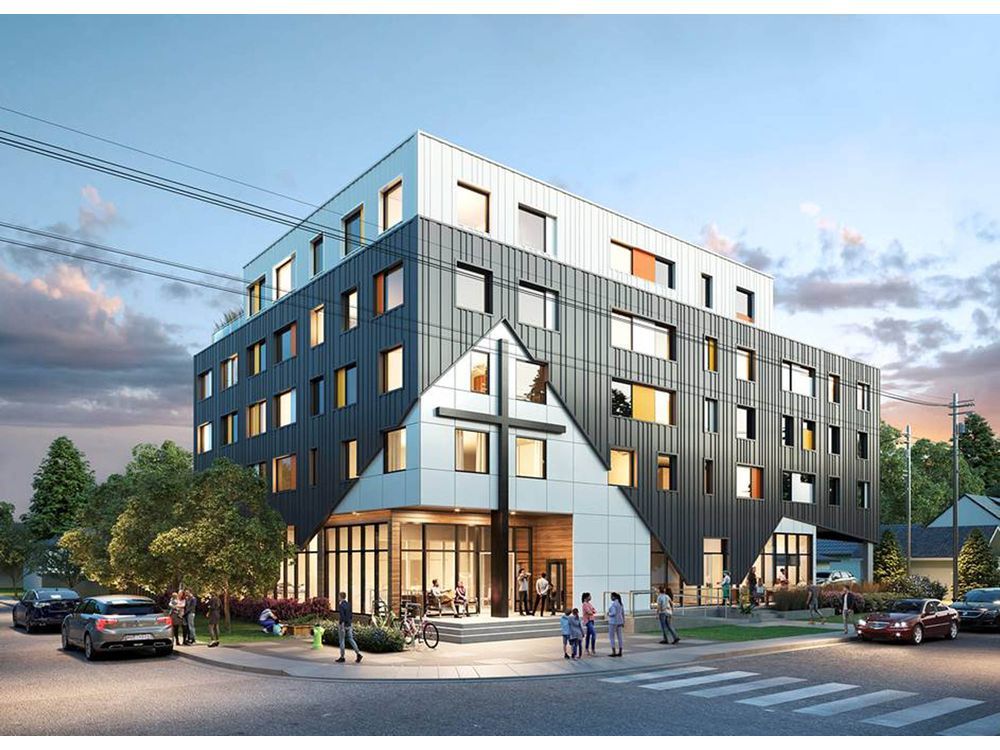Look at Vancouver downtown, hardly any offices relative to the population yet it’s still bustling. We need to make an attractive core where people “want” to live downtown/inner city not one where they “have” to. Right now the stigma with downtown is its dead after 5pm with only homeless people running around. Investments like east village and the entertainment district are great ways to lure people in. When I’m in calgary I don’t always work downtown and neither do a lot of my friends but we’d all still like to live downtown/inner city.
I think that this point is often undervalued by "who wants to live downtown when their are less jobs" critiques. On the surface, job location is critical - however living in downtown will still provide you better access to more jobs than anywhere else in the city - even if downtown's relatively job numbers were low (which they are not). Most cities have far fewer jobs than we do in the core as a proportion of total jobs, even accounting for our recent recessions.
The reason downtown locations are valued are simple: being at the centre of the transportation network of all modes opens up opportunities to access a huge number of jobs in the city in reasonable commute times. Putting cost of housing aside for a minute, if you work minimum wage and are working at a restaurant you could only access a handful within a reasonable commute living in Chaparral and you'd probably have to drive there. Living in the Beltline you probably have 4 or 5 similar restaurants within a few blocks. If you searched for a similar commute time.
Now that I am ranting, check this out: here's some data to back it up from the fun mapping site I found,
Mapnificent, calculates travel time by real transit data. Same level of zoom for each picture.
Highlighted area is 30 minute transit time from the centre of Chaparral (corner of 194 Ave & Chaparral Blvd SE ) vs. centre of downtown.
"Not fair comparison" someone could say, "this is transit, downtown has better service". But if you did a driving map the logic repeats. Central is more accessible to more jobs to more people in any situation no matter how they get there. This doesn't even account for that jobs are not uniformly spread, the map on the right has the highest density of jobs too. I am making this up but Chaparral might access 10,000 possible jobs in 30 minutes by transit, downtown might be able to access 250,000 in the same time (even if it's down 50,000 thanks to a recession).
If this is all obvious - that's the point. It's why rents stay high downtown for apartments, it's why we keep building more there; it's why entertainment districts succeed in city centres, why they fail in Kanata; it's the logic behind why cities and density is so much more productive (and increasingly so) than rural, sparse districts. In fact, the success of the city centre's accessibility is exactly the cause of "it's too expensive" argument: it's expensive because so many people would be willing to pay more for additional access that prices go up from demand.
Of course this isn't to say Chaparral is useless or a bad location - it's saying that it can't possible be the best location for the most people to access the most jobs (or services, or amenities etc.) Same goes for all the other low-density, car-dependent suburban locations. On aggregate the suburbs make up the large majority of residents and a bunch of jobs, but none of them individually come close to the location and job access of the city centre. As a result, they compete largely in a large, poorly differentiated market holding home prices down and transportation costs up.
If you want the option to take transit, bicycle or walk - there is no competition: city centre and LRT corridors are the only chance you reasonably have.
If you want to drive, city centre is likely still more competitive than a random suburban neighbourhood (but perhaps more expensive for car storage).
If you don't know what you want and want your property to appeal to as many as possible for renting it out, city centre would still be the best place.
If you happened to be worth a few hundred billion and need to invest in a few apartment towers with decades-long payback, where would you invest in those apartments?
In conclusion, if all what I am saying is true what's holding downtown back?
I would argue nothing is technically holding us back - we have had 30+ residential towers over the past 20 years in the Beltline for example, so something is clearly working - and continued population growth throughout the city centre region. I think stigma is part of it, as decades of perception of the city centre only being for a narrow demographic combined with the means to choose (high transportation costs and low job accessibility means less if it's boom times and I make 150K / year and can satisfy whatever societal norm of big trucks and big houses I want).
Through both choice and necessity (small families, appreciation for urban amenities/access, lower incomes so people have to choose more carefully how they are going to live) an argument can be made that it's completely logically to expect continued apartment and inner city growth in some form. Sprawling suburban development probably won't stop either - it's cheaper and we don't show any appetite for using a regulatory tool to change that.
But if I was to measure it all up, especially from coming from such a high boom-time fueled base, I would expect that Calgary has seen peak-home ownership and will see continued apartments/rental increase instead. As the city centre makes the most sense for this kind of development, we should expect to see continual growth at some pace for the foreseeable future.





